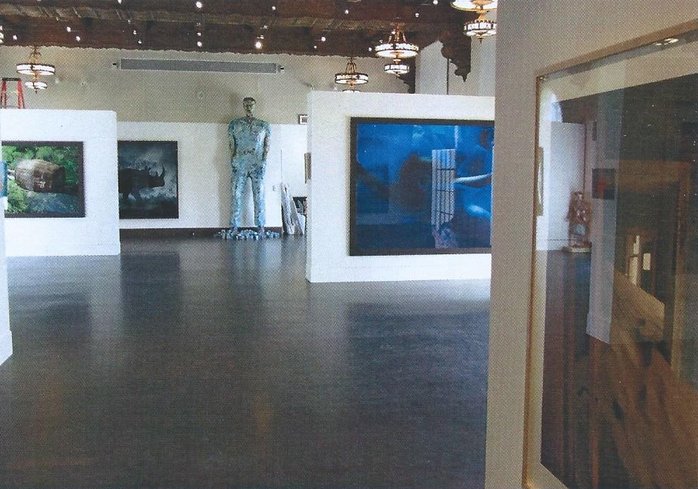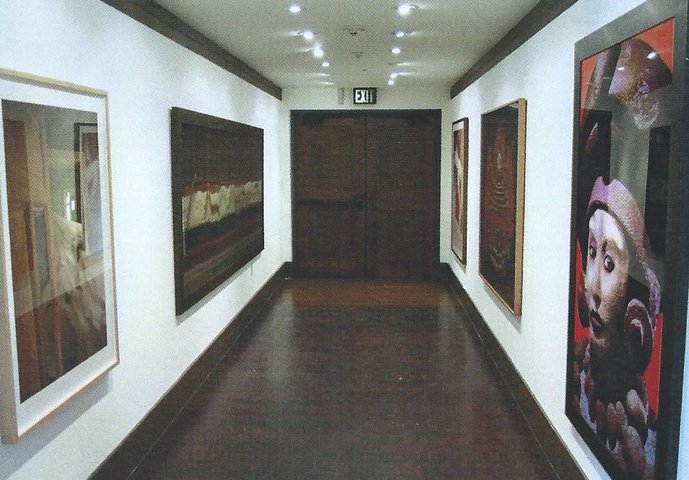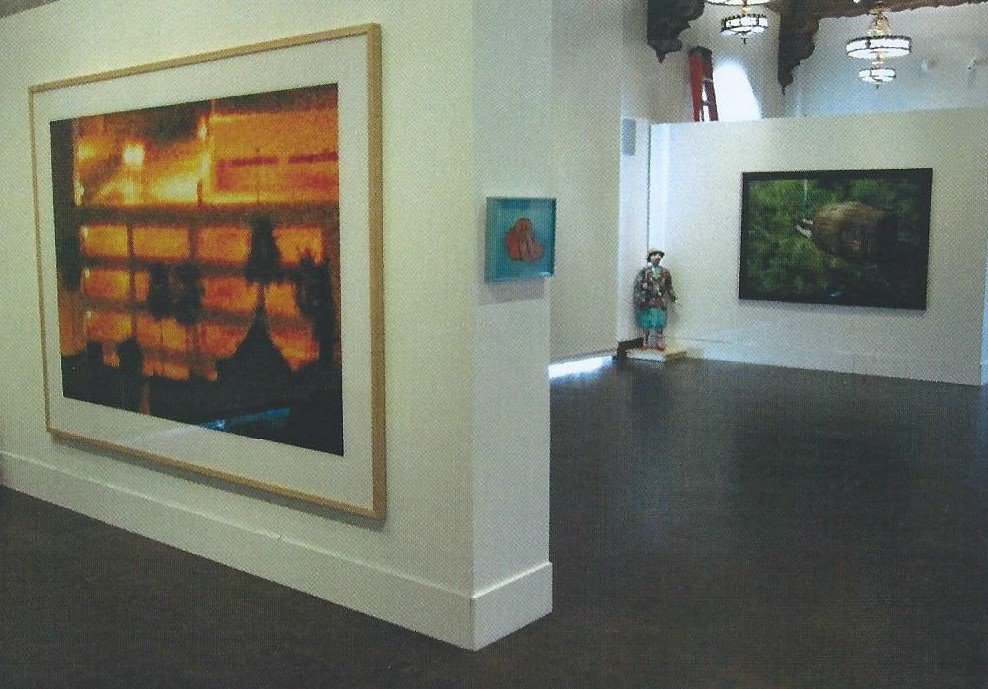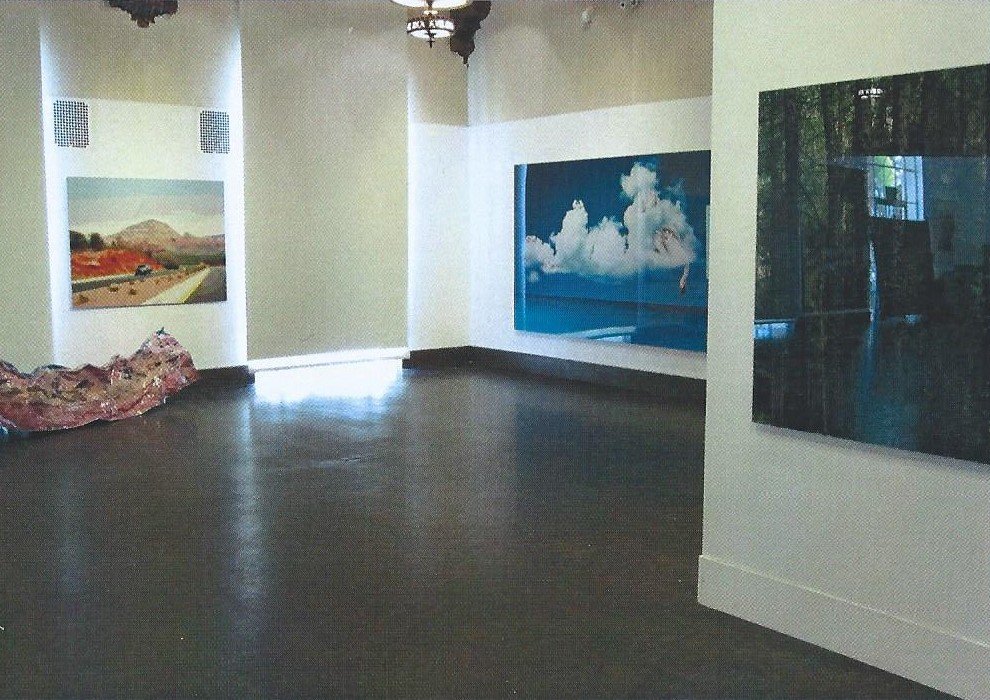Photos and Phantasy: Selections from the Frederick R. Weisman Art Foundation






Date: May 5, 2010 – July 12, 2010
Curated By: Billie Milam Weisman
Venue: Beverly Hills Municipal Gallery
450 N. Crescent Drive, Beverly Hills, CA, 90210
Exhibited Artists:
Bijou, Debbie Fleming Caffery, Clegg & Guttmann, Dawn Dedeaux, Yannick Demmerle, Richard Ehrlich, Maya Elston, Brian Forrest, Catherine Forster, Joe Goode, Jane Gottlieb, David Hockney, Jay Mark Johnson, Elad Lassry, Louise Lawler, Srdjan Loncar, Jarbas Lopes, Renee Lotenero, Didier Massard, Joel Morrison, Orlan, Melanie Pullen, Jessica Rath, Robert Rauschenberg, Thomas Ruff, Paul Rusconi, Rocky Schenck, Hans Christian Schink, Kiki Seror, Annelies Strba, Christopher Taggart, Timothy Tompkins, Nicole Tran Ba Vang, Trujillo Paumier, Andy Warhol, Marijke van Warmerdam, John Waters, and Xianyong Zhang.
Photos and Phantasy: Selections from the Frederick R. Weisman Art Foundation
TYPES OF PHOTOGRAPHS
GELATIN-SILVER PRINT: Black and white processing of a film negative. Gelatin silver prints are papers coated with a layer of gelatin that contains light sensitive silver salts. They were developed in the 1870's and by 1895 had generally replaced albumen prints because they were more stable, did not turn yellow and were simpler to produce. Gelatin silver prints remain the standard black and white print type.
C-PRINT: Color processing of a film negative. The ‘C’ is for chromogenic, meaning that the color dyes are chemically formed in the emulsion during color development.
CIBACHROME (now called ILFOCHROME) prints are created from color transparencies (slides) by a system that is different from regular color prints (negatives). The sharpness, color intensity, clean whites, and critical accuracy to the original slide are superior. The prints are made on a stable tri-acetate polyester base (plastic, not paper) which means the print will not fade, discolor or deteriorate for a very long time; hence, the best archival quality print and more environmentally friendly.
Cibachrome process was developed in Switzerland in the 1960s and was later purchased by Ilford. The process is different than Type R processing (which uses color dyes that interact with the developer to place the color onto the paper – chemical process). Cibachrome dyes are imbedded in the paper and then bleached out during processing. Because the dyes are in the paper’s emulsion, not in the chemistry, they are able to act as an anti-light scattering layer which keeps the projected image from spreading out as it penetrates and exposes the emulsion (increased sharpness and saturation).
DIGITAL C-PRINTS are photographic prints made by exposing a sheet of photographic paper to light inside of a digital printer instead of to light projected by an enlarger. The digital C-print is then processed in a color processor just as a traditional C-print would be.
LASERCHROME (Trademarked) is continuous tone laser exposure on photosensitive paper.
LIGHTJET exposes photographic paper with laser light. Lightjet photograph is an actual photographic print exposed by the Lightjet 430 laser printer. The printer reads the information in a digital file, and then uses lasers to expose the image onto Fuji Crystal Archive paper. This paper has been tested to be more archival than other popular color printing methods (lasting over 60 years without noticeable fading in controlled conditions), including Ilfochrome printing. Unlike inkjet prints, which lay ink on paper, Lightjet prints are made on light-sensitive photo paper, which is exposed with red, green and blue lasers.
TYPES OF PHOTOGRAPHY
STRAIGHT PHOTOGRAPHY refers to photography that attempts to depict a scene as realistically and objectively as permitted by the medium, forsaking the use of manipulation both pre-exposure (e.g., filters, lens coatings, soft focus) and post-exposure (e.g., unusual developing and printing methods). (Edward Weston, Ansel Adams, Alfred Stieglitz)
· Pictoralism was a photographic movement in vogue from around 1885-1914 and declined rapidly after the widespread emergence of Modernism. It subscribed to the idea that art photography needed to emulate the painting and etching of the time. Most of these pictures made were black & white or sepia-toned. Among the methods used were soft focus, special filters and lens coatings, heavy manipulation in the darkroom, and exotic printing processes.
· Documentary Photography
· Snapshot Aesthetic refers to the camera-derived unembellished snapshot (polaroid included). It is the least self-conscious or sophisticated photographic approach. (Larry Clark, Robert Frank, Lee Friedlander)
· Manipulated Photography refers to a photograph that has been altered, embellished, or assaulted.
· Fabricated Photography means pictures whose nonhuman subjects have been constructed by the photographer for the sole purpose of being photographed. (Ellen Brooks, John Divola, Laurie Simmons) It is a subset of set-up photography or staged photography, which are more expansive because they encompass human and animal forms (Cindy Sherman, William Wegman, Man Ray). All these approaches reject traditional, observable subjects in favor of highly theatrical, frankly fictitious ones.
· Fashion Aesthetic refers to the use fashion photography’s glamorizing style in “art” photographs intended for gallery walls. It relies on bold and simple design, flavored with a dash of class and sexiness. (Robert Maplethorpe, Irving Penn, Helmut Newton).
DIGITAL PHOTOGRAPHY: Digital photography uses an electronic sensor such as a charge-coupled device to record the image as a piece of electronic data rather than as chemical changes on film. Some other devices, such as cell phones, now include digital photography features.
Although not viewed by all photographers as true photography, digital photography in fact meets all requirements to be called such. Even though there are no chemical processes, a digital camera captures a frame of whatever it happens to be pointed at, which can be viewed later. In 10 years, digital point and shoot cameras have become widespread consumer products. These digital cameras now outsell film cameras, and many include features not found in film cameras such as the ability to shoot video and record audio.
· Digital images are created using a gridded mosaic of light sensitive picture elements, called pixels, embedded on a computer chip. The pixels emit electrical signals in proportion to the amount of light they receive and these signals are converted to numbers and then stored electromagnetically - in a computer or on a disc, for example. Digital images can be manipulated and altered by computer and regenerated in many ways: on computer or television screens, on film, printed or projected. The technology for producing digital images is evolving rapidly with new possibilities constantly emerging.
OTHER PRINTING METHODS, PROCEDURES, and SUBSTRATES
GICLEE (zhee-clay) is the one of the newest and most precise methods of fine art reproduction. A Giclee is a limited edition fine art print produced with continuous tone ink-jet technology on a variety of media which renders an image of exceptional clarity. Giclee means “to squirt” in French.
A Giclee press has a pallet of over seven million colors and can deliver up to four million droplets of ink per second. Prints can be reproduced from transparency or directly from the original without compromising detail and color vibrancy. These prints have a finer resolution than lithographs and larger color range than serigraphs. It is important for the artist to approve the color to configure the custom settings for each edition. As a result, producing a Giclee is a slow and meticulous process.
DIASEC (Restricted) is a patented method of gluing the image side of photos, transparencies, lambda prints and various types of graphic material to transparent material (such as acrylic). The Diasec (trademarked) process guarantees gluing without air bubbles and without visible dust or residue. It is used for the preservation of images.
DIBOND (Restricted) is a lightweight but rigid and durable aluminum composite material (ACM). Its excellent smooth surface enables precise screen printing and clean photo mounting and laminating.
COLLAGE from the French coller, to stick - involves combining fragments of different materials, which are not necessarily photographic. There is normally no attempt to conceal the edges of the pieces and the artist might add pencil, pen or brushwork onto the surface.
MONTAGE from the French monter, to mount - involves combining diverse photographic images to produce a new work. This is often achieved by rephotographing the mounted elements or by multiple exposures.
